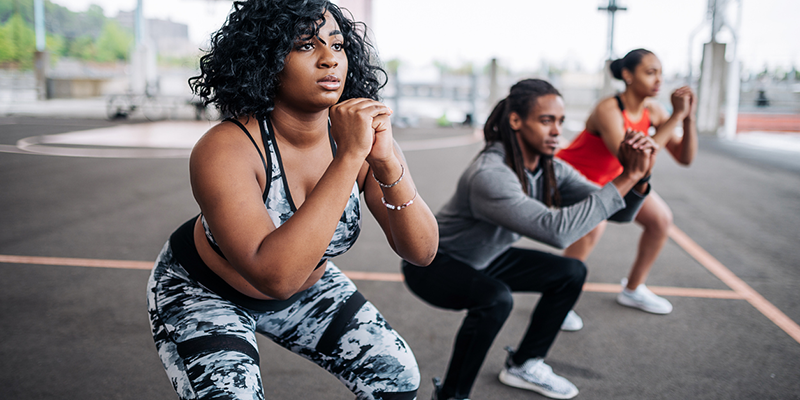
- Healthy gym etiquette can help you avoid common germs that can lead to illness.
- While germs can be contracted at the gym, the risks don’t outweigh the benefits of a good workout.
- Practicing good hand washing hygiene, covering up cuts and skin breaks, wearing shoes, wiping down equipment before and after use, and bringing your own towels and mats can help keep germs away.
Sometimes, it’s hard just to get yourself to the gym. Once you’re there, the last thing you want to worry about is coming into contact with dangerous germs.
In fact, according to a survey of over 1,000 gym-goers, sanitary practices were the respondents’ biggest pet peeves, with the following at the top of their list:
- More than half of gym-goers witness bathroom users not wash hands and continue using gym equipment.
- 35 percent of men admitted to never wiping down weight machines after using them, while over 25 percent of women admitted to never wiping down cardio equipment.
- 38.4 percent of gym-goers fail to wipe down equipment in the afternoons while 21.2 percent fail to do so in the late evening.
“It’s really important to go to the gym and be healthy and people should not (have to) worry about getting sick… keeping them from the gym. The health benefits are great and the risk of infection is pretty low for most people,” Dr. Nirav Patel, chief medical officer at the University Medical Center New Orleans, told ETI.
Nevertheless, Patel said there are some germs to be aware of so you can properly safeguard yourself.
Staph bacteria
Staphylococcus infections and MRSA can live on gym equipment, such as machines, free weights, and mats, as well as on towels, benches, and in locker rooms.
“If you want to protect yourself, wipe down the equipment using antibacterial wipes or sprays that gyms provide or use your own towel as a barrier between yourself and the [equipment],” said Patel.
Jason Tetro, microbiologist and host of “Super Awesome Science Show,” agreed, but said because people don’t regularly wipe down equipment before and after use, it’s a good idea to take other preventive measures.
“Ensure any wounds are covered before you start exercising. That will help to reduce the chances for skin infection. Do your best not to touch your face after you have touched a surface. This can reduce the chances for introduction of a potential pathogen,” Tetro told ETI.
He added, “When you’re finished, take a shower with soap shortly after you have exercised to remove any germs that may have come onto your skin when you were working out. Also, make sure your clothes are washed and dried regularly.”
Fungal infections
Athlete’s foot and jock itch are often caused by a group of fungi called dermatophytes, which can also cause ringworm. They can be acquired from the locker room environment.
“Athlete’s food is caused by fungi that live all over but are associated with moist, damp, wet environments,” Patel said.
Changing out of wet clothes and then airing them out and washing them when you get home is good hygiene practice, said Patel.
“Change your shoes frequently so they have a chance to air out,” Patel added. “Wearing moisture-wicking materials can help cause the sweat to evaporate so it’s not causing a moist wet environment, and walking across the gym floor with shoes on instead of barefoot can help prevent getting that fungi.”

Viruses
Plantar warts are caused by the human papillomavirus (HPV), and usually develop on the heels or balls of the feet.
“Don’t walk [barefoot] on moist, wet environments where it lives. Take a shower and rinse off with clean water,” said Patel.
Herpes gladiatorum, also referred to as mat herpes, is caused by herpes simplex virus type 1.
“It comes from wrestlers back in the Roman days who would get herpes because they were wrestling in close contact with each other,” said Patel.
Athletes who play contact sports today can still contract mat herpes.
“Avoiding shared equipment and towels and using your own clean stuff is important in this situation,” said Patel.
Airborne respiratory viruses are another concern in gyms, noted Tetro.
“While people should not go to the gym when sick, it’s hard to stop them. If you happen to see someone who is coughing, sneezing, or showing any general signs of shedding, you may want to avoid that area until at least a minute after the person has left. You also want to wipe down the equipment to ensure you don’t pick up viruses from the surfaces and send them into your respiratory tract by touching your face,” Tetro said.
Patel suggested intervening with the ill person.
“If someone at a class is coughing and sneezing and not performing good cough etiquette, then you can ask them to take steps to cover their cough or give them a Kleenex or hand sanitizer. Or, go on the other side of room or use a different piece of equipment,” he said. “But this could be the case in any public setting… not just the gym.”
As for drinking from public water fountains or coffee pots and eating refreshments offered at the gym: “I’m not terribly worried about that. The food and drink are usually maintained to reasonable hygiene,” Patel said.
Though if you’re going to drink or eat refreshments provided by the gym, you should practice common sense. If cups and dishes look dirty or like they haven’t been rinsed in a while, use a disposable cup or bring your own reusable cup.
“I tell many people during the cold and flu season to get the flu shot and practicing good hand hygiene. Most of the time, you get the flu not because someone sneezed in your face, but because you touched something or are around people who are constantly coughing or sneezing, so when you pick up that phone receiver or touch the door knob and touch your face without good hand hygiene, [you contract the illness],” said Patel.

Bottom line
While germs can be contracted at the gym, the risks don’t outweigh the benefits of a good workout.
“The risk people undertake just going to the gym are probably sometimes exaggerated because of the one story we hear in the news, but that doesn’t mean it happens all the time. At the same time, people die every day from heart disease and going to the gym helps with that,” said Patel.
Practicing good hand hygiene, covering up cuts and skin breaks, wearing shoes, wiping down equipment before and after use, and bringing your own towels and mats can help keep germs away.

You can check out the latest casting calls and Entertainment News by clicking: Click Here
Click the logo below to go to the Home Page of the Website
Click the logo below to follow ETInside on Twitter
Click the logo below to follow ETInside on Facebook
Click the logo below to follow ETInside on Instagram
Click the logo below to follow ETInside on Pinterest
Click the logo below to follow ETInside on Medium















